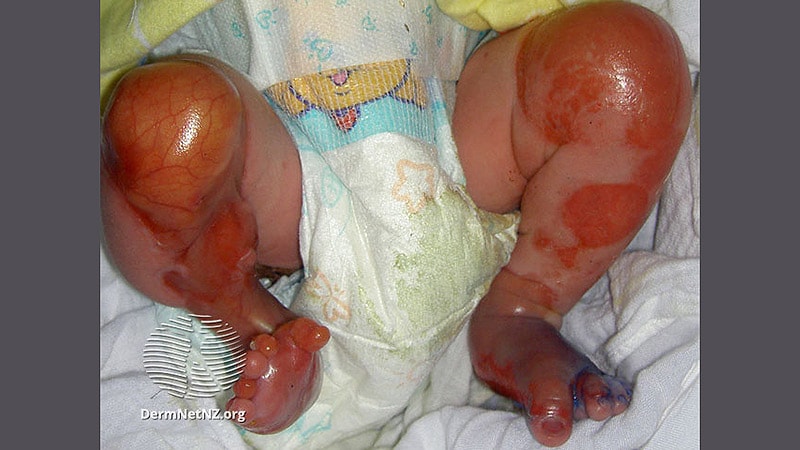Comprehensive Analysis of Oral Manifestations in Kindler Epidermolysis Bullosa: Highlighting the Prevalence of Enamel Defects and Severe Periodontal Complications
Core Concepts
Kindler epidermolysis bullosa (KEB), a rare genetic skin-blistering disorder, is associated with a high prevalence of oral manifestations, including pitted amelogenesis imperfecta, severe periodontal disease, and an increased risk of oral squamous cell carcinoma.
Abstract
This report presents the findings of a longitudinal study conducted on 36 patients with Kindler epidermolysis bullosa (KEB) from 2003 to 2023. The study aimed to investigate the prevalence and severity of orofacial features in this rare genetic disorder.
Key highlights:
All 11 patients with available information on enamel structure had pitted enamel anomalies (pitted amelogenesis imperfecta), with variable severity.
Three patients had all their teeth crowned in their 20s, and two had all their teeth extracted in their teens or 20s, indicating severe enamel defects and periodontal disease.
The most common orofacial features were periodontal disease (27 out of 36 patients), intraoral lesions (16 out of 22 patients), angular cheilitis (24 out of 33 patients), and cheilitis (22 out of 34 patients).
Gingival overgrowth (17 out of 26 patients), microstomia (14 out of 25 patients), and vestibular obliteration (8 out of 16 patients) were also observed.
Oral squamous cell carcinoma was diagnosed at the site of chronic lip lesions in two patients, with lethal outcomes.
The authors emphasize the importance of early detection and preventive measures to minimize the complications associated with KEB, particularly in terms of oral health. They conclude that "oral care is mandatory" for patients with this rare genetic disorder.
Tooth Enamel Disorder Is a Feature of Kindler EB
Stats
All 11 patients with information on enamel structure had pitted enamel anomalies (pitted amelogenesis imperfecta).
Three patients had all their teeth crowned in their 20s, suggesting enamel defects.
Two patients had all their teeth extracted in their teens or 20s, indicating severe periodontal disease.
27 out of 36 patients had periodontal disease.
16 out of 22 patients had intraoral lesions.
24 out of 33 patients had angular cheilitis.
22 out of 34 patients had cheilitis.
17 out of 26 patients had gingival overgrowth.
14 out of 25 patients had microstomia.
8 out of 16 patients had vestibular obliteration.
Oral squamous cell carcinoma was diagnosed in 2 patients, with lethal outcomes.
Quotes
"All 11 patients with information on enamel structure in their records had pitted enamel anomalies (pitted amelogenesis imperfecta), with variable severity."
"Of patients whose enamel could not be analyzed, three had all teeth crowned in their 20s, suggesting enamel defects, and two had all teeth extracted in their teens or 20s, indicating severe periodontal disease."
Key Insights Distilled From
by Gargi Mukher... at www.medscape.com 04-01-2024
https://www.medscape.com/viewarticle/tooth-enamel-disorder-feature-kindler-eb-2024a100061s
Deeper Inquiries
What are the potential genetic or molecular mechanisms underlying the association between Kindler epidermolysis bullosa and the development of enamel defects and severe periodontal disease?
Kindler epidermolysis bullosa (KEB) is linked to pathogenic variants in the FERMT1 gene, which plays a crucial role in cell adhesion and signaling processes. The disruption of FERMT1 function can lead to abnormalities in the formation of tooth enamel, resulting in hypoplastic pitted amelogenesis imperfecta. This genetic mutation affects the development of enamel-forming cells, leading to enamel defects characterized by pitting and hypoplasia. Additionally, the same genetic mutation can impact the integrity of oral mucosa and periodontal tissues, making KEB patients more susceptible to severe periodontal disease. The molecular mechanisms underlying these associations involve the dysregulation of cell adhesion, tissue remodeling, and inflammatory responses in the oral cavity, contributing to enamel defects and periodontal complications in KEB patients.
How can the early detection and management of oral complications in Kindler epidermolysis bullosa patients be improved to prevent the development of life-threatening conditions like oral squamous cell carcinoma?
Early detection and management of oral complications in Kindler epidermolysis bullosa (KEB) patients are crucial to prevent the progression of potentially life-threatening conditions such as oral squamous cell carcinoma. Regular dental screenings, starting from a young age, can help identify enamel defects, periodontal disease, and other oral manifestations associated with KEB. Implementing preventive measures, including oral hygiene education, fluoride treatments, and regular professional cleanings, can help maintain oral health and prevent the exacerbation of dental issues. Additionally, close monitoring of oral lesions and prompt treatment of any abnormalities can reduce the risk of malignant transformations leading to oral squamous cell carcinoma. Collaboration between dermatologists, dentists, and other healthcare providers is essential to ensure comprehensive care for KEB patients and early intervention to prevent severe oral complications.
What are the broader implications of this study's findings for our understanding of the relationship between genetic skin disorders and oral health, and how might this knowledge inform the development of more comprehensive and integrated approaches to patient care?
This study's findings shed light on the intricate relationship between genetic skin disorders, such as Kindler epidermolysis bullosa (KEB), and oral health manifestations, emphasizing the need for a multidisciplinary approach to patient care. Understanding the systemic nature of genetic disorders like KEB and their impact on oral health can inform the development of more comprehensive and integrated healthcare strategies. By recognizing the oral manifestations early and addressing them proactively, healthcare providers can improve the quality of life for patients with genetic skin disorders. This knowledge underscores the importance of holistic patient care that considers both dermatological and oral health aspects, leading to more effective prevention, early detection, and management of complications associated with these complex genetic conditions.
0
